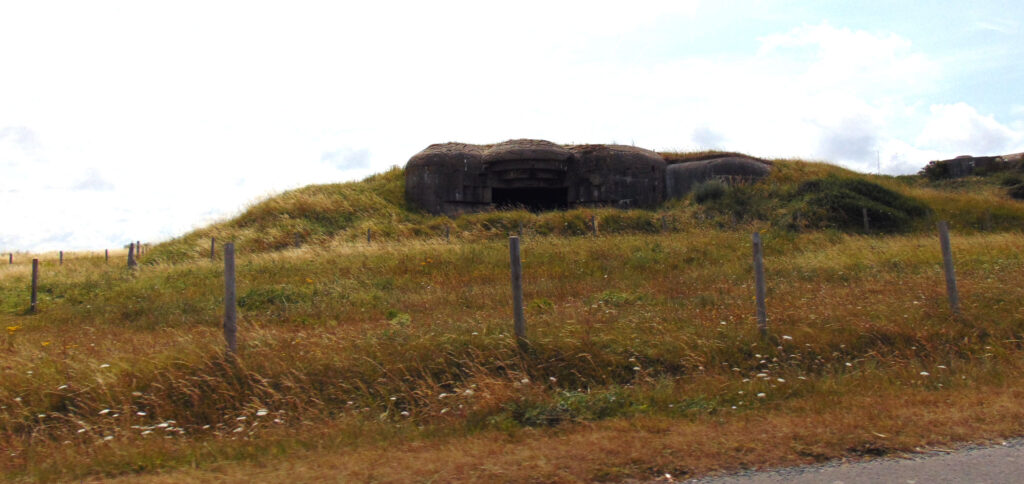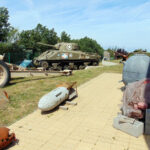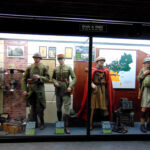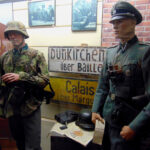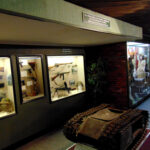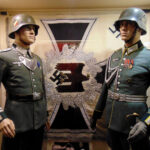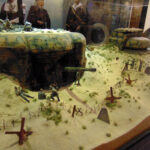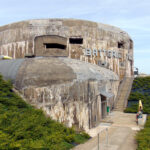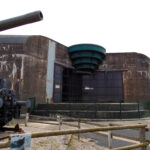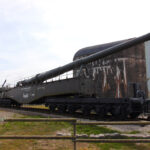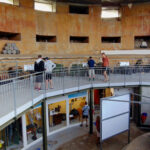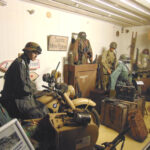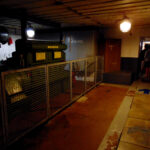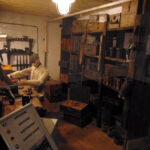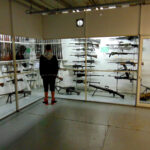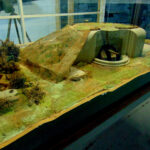For our friends and colleagues, the lovers of the military history, we make our author’s unusual WW2 tours from Paris for one to three days, of course only private, through the famous battlefields on the Western Front and the most interesting museums in the North-East of France. All our tours are conducted by the book authors, the best experts on the Second World War, the members of the Associations and the donors for the National military museums of France. For 25 years, our team has been conducting the private tours of the famous WW2 battlefields on the Western (Normandy D-Day Allied Landing) and on the Eastern Front (restricted museums in Russia, the tank battles in Kursk-Prokhorovka and Stalingrad, the Caucasus and more, see our Guide galleries). Our friends and colleagues from the USA, France, Germany, the Netherlands, Australia, Britain and many other countries can confirm this, as well as our photo reports on our guide. A friendly Club atmosphere trip is not a business, but a communication of the friends and colleagues from all over the world. Therefore, your charges include only the cost of the transport services (car, gasoline, toll roads fee and a lunch with a driver). We also do not refuse “the tips” (fr. Pour boire), they go to the fund of our Historical Association and the care of the graves of the dead. To maintain a friendly atmosphere, we have the right to refuse any applicant from any country without the giving reasons. This system can be considered as a Global International and Club system. The collectors, the members of reenactment groups, the scale model makers, the military historians understand why we do this way. We also provide our friends with rare archival materials, the documents, the photographs from our own collections for study or work. When submitting a request, be sure to include your special interests and approximate level of knowledge so that we can create the best itinerary for you and your friends. If you learned about us from our friends or from special thematic forums and groups on social networks, also write to us about it, this will help to create the best program and itinerary.
Atlantic Wall, secret V-ranges, the monuments, the bunkers, the historical-military museums and the interesting places in the North-East of France.
Trip from Paris to Boulogne, Calais, Dunkirk from Napoleon’s camp to the Secret underground V-1/V-2/V-3 missile factories.
WW2 battlefield private tours across the English Channel
Historical region of France, the nearest point for crossing the English Channel and arriving in England. In a clear sunny weather, sometimes you can even see the English coast from the shore. Several eras, several historical times and many events. According to you favorite period of the history, the various routes and places to visit are offered. Below are the main attractions of the region, which we propose to visit with a famous historian guide from our team, the author of the books and the numerous publications. We understand that fans of the history of the Second World War are not so interested in the Napoleonic era, but since you have traveled thousands of kilometers and ended up on the “Atlantic Wall”, why not spend only 5 minutes and stop near the monument to Emperor Napoleon I and the place of his camp ? After all, this is also the prehistory of the relationship between France, England and Germany and allows you to better understand the historical and geographical realities of the Second World War in the English Channel. Therefore, we post all the interesting places in the region and the recommended program, and you will decide how much extra time you will spend on each interesting place.
Boulogne-sur-Mer: Ancient houses and engineering structures, magnificent Castle-Citadel, the cafes with the national French cuisine and the wine cellars. During the time of Napoleon Bonaparte, the main military camp for the capture of England was located here. According to Napoleon’s project for the conquest of England, all the troops were gathered, which stood for about 4 years. The first awards of the Order of the Legion of Honor took place here. The city has a monument and a column of Napoleon, the highest in the world and a small Napoleonic museum.
– Museum “The Castle of Boulogne-sur-Mer”.
Castle Château de Boulogne-sur-Mer – this is the main museum of the local history, where there are the various expositions – Napoleonic, Egyptian Auguste Marietta, a local native of the founder of the Cairo Museum, paintings, incl. Latour-Mabur, 3/4 Russian, Chukchi and Aleut masks, one of the locals French people worked in Russian America, etc. It’s strange to learn more about the history of America in the middle of France?! What else – Memorial sign in honor of the first unknown soldier, etc. What else is interesting for lovers of exotic for collectors and historians.
– The only collection of Aleutian-Chukotian masks in the world
– Europe’s largest museum of the Spout Sea.
Interesting facts: once Boulogne-sur-Mer went to the British and the king of France ordered the construction of the same city on the Seine River in the vicinity of Paris.
Military Museum “39-45”, World War II. During the WW2 battlefields trip, you will visit the local military museum “39-45” to learn more about the history of the tragedy at Dunkirk before the Liberation of France. There are sections showing the general situation at the front, including those about the Germans near Moscow and in Stalingrad, the Russian winter and frost. Particular attention is paid to the “Atlantic Wall” coastal fortification system and to General Rommel, the future field marshal.
- Military Museum 39-45 along the route, A1
- Defense of France 1940, A2
- Dunkirk and Calais, Waffen SS, A3
- Small arms hall, A4
- Wehrmacht infantry and flag, A5
- Atlantic Wall bunkers scale model, A6
Calais: the city with an old fortress, the monuments to various sailors and submarines, the house and grave of Lady Hamilton. From modern art, there are now two giant de Gaulle monuments (the general married in Calais, so there is another separate monument in honor of this event)
Museums:
– Military Museum of the 2nd World War, with military equipment – with the tanks and the guns.
What else is interesting.
– Museum of Fine Arts with paintings and partly on the Napoleonic theme
– Lace Museum, it’s something with giant mechanical machines.
Dunkirk: a famous city known throughout the world, including thanks to the recently released film about the Second World War. Local Attractions:
– The ancient Fortress-Citadel, the embankment, the monuments of the operation “Dynamo”, the sailing ship “Duchessa Anna” and … the embankment of Emperor Nicholas II.
– Military Museum “Dunkirk, Operation Dynamo” in 1940.
Atlantic Wall – the strong system of the German WW2 fortifications to prevent the landing of the “allies” and the opening of the “Second Front” in Europe. During the Allied D-Day Normandy Landings, there was a real diversionary airborne assault in the region to deceive the Germans. Throughout the coast of the English Channel from Boulogne-sur-Mer to Dunkirk, the pillboxes, the bunkers, the command posts and the memorials have been preserved. Many dugouts of the Second World War are available for the internal inspection, but some are opened on holidays.
– Fort Alpres, German Command Post during the Canadian landings
– A pillbox and a small museum with a Ferdinand cannon on the shore (Cape Gray Nose, 10 km from Boulogne), a small museum collection, next to it is an abandoned pillbox where you can climb and take beautiful photos. There is also an obelisk and fortifications.
– Pillboxes in and fortifications in the Dunkirk area.
Separately, a little in the depths of the Atlantic Wall are the fortifications and launch pads of the German V-1, V-2 and V-3 rockets, which are now used as museums of rocket and space technology of the Second World War.
– Museum “Bunker Eperlecques” (Le Blockhaus d’Eperlecques)- protected engineering the structure, the bunker system and launch pad for the shelling London (England) with V-1 and V-2 missiles.
– Museum “Fortress Mimoyecques” -the secret protected military base of Nazi Germany with V-3 missiles.
Long range battery “Todt” – ultra-long-range cannons for the shelling England, located in the special protected bunkers, are a nightmare for Britain. In the narrowest part of the English Channel at Cape Gray Nose, the Germans installed such a battery to fire at strategic targets in foggy Albion. The shelling of UK seaports and coastal cities got it also. The well-preserved infrastructure of the Todt facilities, as well as the Ferdinand long-range cannon, make it possible to visually understand the history of those events. Inside, all combat and technical rooms are used as small museums with expositions on the theme of the Atlantic Wall. Artillery, light small arms guarding bunkers, service personnel uniforms.
- WW2 fortifications Todt, T1
- Battery Todt front, T2
- Giant cannon, T3
- Gun Leopold, T4
- Inside the bunker, T5
- Exhibition corner, BMW motorcycle* and manikins, T6
- Diesel generator room, T7
- Armory and attendant, T8
- Collection of small arms, T9
- Scale model of the battery, T10
Secret weapon of the Third Reich
“Weapon of retaliation” V-3. For the shelling of England and London, the German command personally under the leadership of the Fuhrer prepared a number of projects for a new generation of weapons from ballistic intercontinental missiles to flying saucers under the symbol “V” (Vergeltungswaffe – “Weapon of Retribution”). V-1 is a classic cruise missile. The V-2 is a prototype of the R-1 by the Soviet designer Korolev, well known in Russia, but few people know about the V-3 project. The V-3 multi-chamber artillery gun, codenamed “High Pressure Pump” (HDP), is based on an extra-long gun “booster” barrel with many additional charging bays. For such a complex system, the V-3 received the nicknames “Centipede”, “English Cannon”, “Buddy” or “Hardworking Lizhen”. The gun had a length of 124 meters, a caliber of 150 mm and a weight of 76 tons. The trunk consisted of 32 sections with a length of 4.48 m; each section had two charging chambers located at an angle along the barrel, and in total there were 60 side chambers. Arrow-shaped feathered projectile weighing up to 140 kg., up to 3250 mm long and with an explosive mass of 25 kg. had a range of up to 165 km., which was enough to shell England and its capital.
Just 5 miles from the English Channel coast and 95 miles from London, a special position was prepared for 5 HDP guns. The volume of work was colossal, more than 5,000 people from nearby concentration camps, where there were Soviet prisoners of war, worked simultaneously during the construction. Local residents were also involved, some of whom were associated with partisans and underground fighters from the Resistance Movement. Allied intelligence found out about the construction of this facility and began to bomb it heavily, using special bombs that cause an artificial earthquake in the dungeons. One of the bombs successfully hit the mine window and paralyzed the operation of the entire installation. Most of the underground fortress has survived to this day and you can take an interesting tour of this German secret V-3 base.
What else can you see in the region in northeastern France near the Belgian border?
– The hero city of Ypres – the site of the battles of the First World War. The infamous name for the use of poisonous gas by the Germans, named after the area. But this is another extra day of your trip to the famous battles on the Western Front.
WW2 battlefield private tours from Paris tour schedule, the routes and the expenses.
* View the collection and learn more about the motorcycles, the cars and the trucks from the earliest to the latest you can by visiting the Automobile Museum in Reims, Champagne. You can also see the tanks at the Saumur Armored Vehicles Museum in the Loire Valley with its Royal castles.

